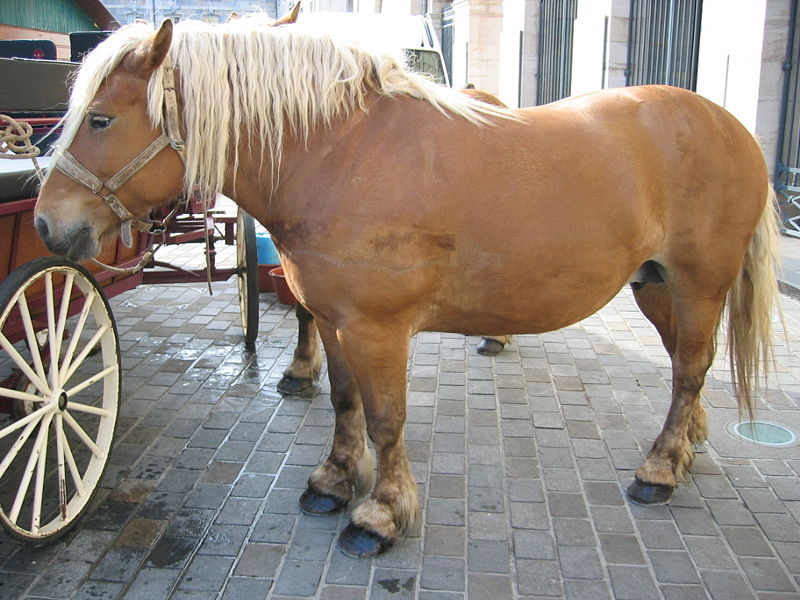The Comtois horse
This ancient draught horse may be a variety of the Germanic breed imported by the Burgundians around the 5th century. In the 16th century, in the Haut-Doubs, near Maîche and Le Russey, its true cradle, the breed was crossed with the oriental horses of the Spaniards who occupied Franche-Comté at the time. Used in the armies of various countries for cavalry and artillery in the 17th and 18th centuries, it was threatened with extinction. In the 19th century, when it was revived, the Comtois was crossed with horses from Normandy, Boulonnais, Percheron and Ardennes.

The Stud Book was created in 1919. Since 1925, Comtois horses have been selected as purebreds.
Caractère et aptitudes du cheval
Docile and straightforward, they are renowned for their hardiness and endurance. They are sure-footed, fast-moving and have energetic, sustained gaits.
Utilisations du cheval
They are still widely used for draught work (logging, vineyard work on uneven terrain), and are much sought-after for leisure and carriage driving. Like all draught horses in France, it will be weighed down in the face of the development of motorization, so that it can be used for meat production rather than for work in the fields.
Morphologie du cheval
Square head. Broad forehead. Straight profile. Abundant tuft. Small, well-set ears. Rather large eyes. Short, medium-sized body. Straight, well-muscled neck. Well-developed withers. Well sloping shoulders. Broad fore chest. Deep chest, rounded ribs. Back broad and short. Loin straight, short, and well attached. Croup a little swallowed, wide. Thigh well let down. Limbs wet, dry. Fine skeleton. Strong joints. Good legs. Feet medium and well shaped. Short, docked tail. Coat: bay, chestnut, often with washed manes and light streaks covering the tendons. Size: 1.55 to 1.65 m.


